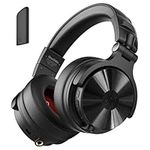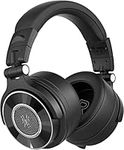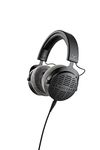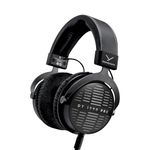10 bestPro Studio Headphonesof December 2025
112M consumers helped this year.
7% off
1
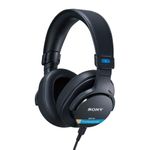
Sony MDR-M1 Studio Closed Back Headphones - Wired, Ultra-Wideband Playback (5Hz-80kHz), Ideal for Studio Recording & Mixing, Lightweight Design (216g), Includes 2 Detachable Cables, Black
Sony

10.0
20% off
2

Sennheiser HD 660S2 Wired Audiophile Stereo Headphones with Deep Sub Bass, Optimized Surround, Transducer Airflow, Vented Magnet System and Voice Coil – Black
Sennheiser

10.0
3
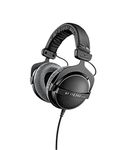
beyerdynamic DT 770 PRO Studio Headphones - 250 Ohm
beyerdynamic

9.9
5% off
4
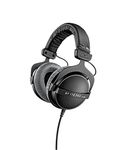
beyerdynamic DT 770 PRO Studio Headphones - 80 Ohm
Beyerdynamic

9.8
5
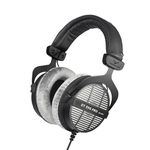
Beyerdynamic DT990 PRO Open Dynamic Studio 250 Ohm Headphones
beyerdynamic

9.8
OtherUp to 6% off
13% off
6
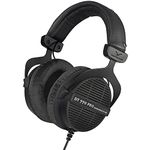
Beyerdynamic DT 990 PRO Limited Black Edition Open-Back Studio Headphones 80 Ohm
beyerdynamic

9.7
5% off
7
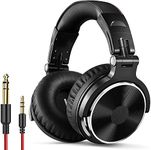
OneOdio Over Ear Headphone Studio Wired Bass Headsets with 50mm Driver, Foldable Lightweight Headphones with Shareport and Mic for DJ Recording Monitoring Mixing Podcast Guitar PC TV
OneOdio
Editor’s Choice

9.6
47% off
8
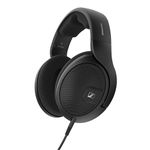
Sennheiser HD 560S, Open back reference-grade headphones for audio enthusiasts, Over Ear , Black
Sennheiser

9.5
9
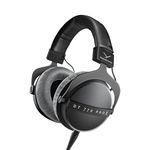
beyerdynamic DT 770 PRO X Studio Headphones for Recording & Monitoring (Closed)
beyerdynamic

9.4
23% off
10
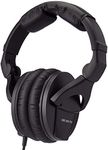
Sennheiser HD 280 PRO Closed-Back Over-Ear DJ & Monitoring Headphones | Collapsible Design & Swivelling Ear Cups | 3M Coiled Cable & 1/4" Jack Adaptor Included (506845)
Sennheiser

9.2
A Guide to Selecting the Best Pro Studio Headphones
Choosing the right pro studio headphones is crucial for anyone involved in music production, sound engineering, or any audio-related work. The right pair of headphones can make a significant difference in how you perceive sound, allowing you to make more informed decisions during mixing and mastering. When selecting studio headphones, it's important to consider various specifications that will affect the sound quality, comfort, and usability of the headphones. Understanding these specs will help you find a pair that suits your specific needs and preferences.
Frequency Response
Frequency response refers to the range of frequencies that headphones can reproduce, typically measured in Hertz (Hz). This spec is important because it determines how accurately the headphones can reproduce the full spectrum of sound, from the lowest bass to the highest treble. A wider frequency response range is generally better, as it allows for more detailed sound reproduction. However, the human ear can only hear from about 20 Hz to 20 kHz, so headphones that cover this range are usually sufficient. If you work with bass-heavy music, you might prefer headphones with a strong low-end response, while classical music enthusiasts might prioritize a balanced response across all frequencies.
Impedance
Impedance is a measure of electrical resistance and is expressed in ohms (Ω). It affects how much power the headphones need to produce sound at a certain volume. Low-impedance headphones (under 50 ohms) are easier to drive and can be used with portable devices like smartphones and laptops. High-impedance headphones (over 100 ohms) often require a dedicated headphone amplifier to reach their full potential, but they can offer better sound quality and are more suitable for professional studio environments. Choose low impedance if you need versatility and portability, and high impedance if you have the necessary equipment and prioritize sound quality.
Driver Size
The driver is the component inside the headphones that converts electrical signals into sound. Driver size, measured in millimeters (mm), can influence the sound quality, particularly the bass response. Larger drivers (40mm and above) can produce more powerful bass and a fuller sound, which might be beneficial for genres like hip-hop or electronic music. However, driver size is not the only factor that determines sound quality, as the design and materials also play a role. Consider your music preferences and whether you need pronounced bass or a more balanced sound when evaluating driver size.
Closed-back vs. Open-back
Closed-back headphones have a sealed design that isolates sound, preventing it from leaking out and blocking external noise. This makes them ideal for recording environments where you need to avoid sound bleed into microphones. Open-back headphones, on the other hand, have a perforated design that allows air and sound to pass through, providing a more natural and spacious sound. They are often preferred for mixing and mastering, as they offer a more accurate representation of the audio. Choose closed-back for recording and open-back for mixing, depending on your primary use case.
Comfort and Build Quality
Comfort and build quality are crucial for long studio sessions. Look for headphones with adjustable headbands, cushioned ear pads, and lightweight materials to ensure they remain comfortable over extended periods. Build quality is also important, as durable materials will ensure the headphones last longer and withstand regular use. Consider your typical session length and whether you need headphones that are easy to transport or store when evaluating comfort and build quality.
Best Reviews Guide Newsletter
Get exclusive articles, recommendations, shopping tips, and sales alerts
Sign up for our newsletter to receive weekly recommendations about seasonal and trendy products
Thank you for subscribing!
By submitting your email address you agree to our Terms and Conditions and Privacy Policy
